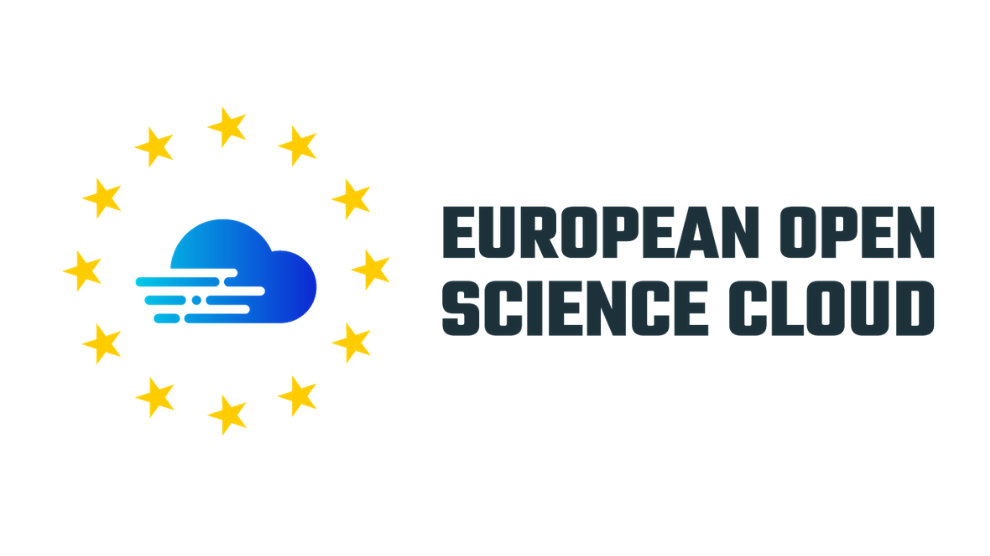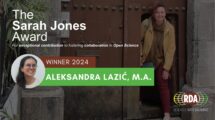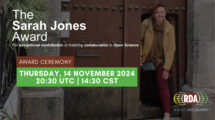[Article originally published in SRCE Novosti - English text below]
The European Open Science Cloud (EOSC) has been in the making and equally in transition for a while now. EOSC as we see it today, is the tangible outcome of a number of key European and global policy statements regarding Open Science, from the three stated main policy goals for EU research and innovation (open innovation, open science and open to the world), the establishment of the European Open Science Policy Platform (OSPP) and positions taken by the Group of Seven (G7) countries, to the Lindau Nobel Laureates and UNESCO.
In the initial phase of development from 2016 to 2020 and funded by the EC through project calls in the Horizon 2020 framework programme, more than 30 projects have laid the foundations of EOSC, with a roadmap published in 2018 to direct its future strategic implementation.
In November 2018, in parallel to the Vienna declaration, a three-tiered transition governance structure was established, comprising the EOSC Executive Board, Governance Board and Stakeholder Forum and supported by the EOSCsecretariat project. This governance structure has been active since January 2019 and its mandate will end at the end of December 2020.
The main objectives of the Executive Board have been to:
- engage with the community of stakeholders to address the key challenges in working groups;
- to provide recommendations on the governance of EOSC in its second phase of implementation under Horizon Europe (2021-2027) and to hand over all outputs to the new governance structure.
Why EOSC?
The digital age presents an opportunity to improve the conduct of research in multiple directions, including with regard to openness, speed of access to scientific results, reproducibility and multi-disciplinarity. This will result in better science, increased trust in science, and the ability to meet global challenges. However, this potential will only be realised if the environment evolves to allow scientists to exploit, in an easy-to-use and integrated way, the (vast amounts of) relevant data being produced.

EOSC will help deliver Europe’s contribution to the realisation of scientists’, and science’s, potential in the digital age, enhancing Europe’s leadership position in exploiting digital capabilities at the service of science.
Six EOSC Working Groups
Addressing the first of these main objectives , the EOSC Executive Board established five working groups for Architecture, FAIR, Landscape, Rules of Participation and Sustainability in early 2019. A sixth working group on Skills and Training started about a year later in early 2020. Around 150 volunteers from across all of Europe has since been active in these working groups and coming to the end of the mandate now, most working groups have published their results:
- Six Recommendations for Implementation of FAIR Practice– official publication
- A Persistent Identifier (PID) policy for the European Open Science Cloud– official publication
- Landscape of EOSC-related Infrasructures and Initiatives– official publication
- FAIR Metrics for EOSC– 2nd Draft out for comments
- Solutions for a Sustainable EOSC– Ironlady Draft (log in to the EOSC Liaison Platform to view or request a copy: info@eoscsecretariat.eu)
- PID Architecture for the EOSC– Draft for consultation
- EOSC AAI Architecture– Draft for consultation
- Scholarly Infrastructures for Research Software– Draft for consultation
- EOSC Rules of Participation– Draft 0.5
A European Partnership and an Association for EOSC
The second objective of the current EOSC Governance has been to provide recommendations on the governance of EOSC in its second phase of implementation. During 2019, the decision was taken by the EOSC Governance to form a co-programmed European Partnership for EOSC and consequently a proposal for such a partnership was developed between September 2019 and April 2020. Such co-programmed partnership further required the development of a Strategic Research and Innovation Agenda, as well as the creation of a new legal entity, the EOSC Association, to enter into the contractual relationship of the European Partnership Agreement with the European Commission.
Between April and July 2020, the EOSC stakeholder community developed Statutes for the new EOSC Association and on 29 July 2020, four founding members (CESAER, CSIC, GARR and GÉANT) met at a notary in Brussels to establish the EOSC Association as a not-for-profit international association (AISBL) in Belgium. By November 2020, the EOSC Association has provisionally accepted 187 members and observers. The organisations which over the summer of 2020 applied to the EOSC Association for membership or as observers come from all across Europe and represent research funding organisation, research performing organisations, or service provider organisations, such as e-infrastructures. The EOSC Association will hold its first General Assembly on 17 December 2020 where elections will be held for the roles of President and Board of Directors.
The strategic direction and objectives of the EOSC Partnership and thus the EOSC Association are described in the EOSC Strategic Research and Innovation Agenda (SRIA) which is currently available in the version 0.9. The SRIA has been developed collectively with the EOSC community, and is not a static document, but rather is envisioned to be a living document that will adapt over time to the changing EOSC ecosystem.
The SRIA begins by describing the background to EOSC. It outlines the history and landscape of the digitisation of research in Europe, and the policy context for open science and open data, together with the development and governance structures of the EOSC initiative. The SRIA goes on to explain the three overarching objectives that are driving EOSC, the guiding principles that are shaping it, and the challenges and prerequisites to implementing the EOSC ecosystem. The SRIA furthermore discusses the anticipated benefits of EOSC, and the critical success factors, before presenting a roadmap and key performance indicators for 2021–2022.
In short, anybody interested in understanding the EOSC ecosystem today and in the future, needs to carefully read the SRIA.
One of the primary tasks of the EOSC Association will be to continuously develop the SRIA, which shall influence future EOSC activities at institutional, national and EU level (including the EOSC-related work programmes in Horizon Europe).
A strong foundation for a successful future
So, at the end of a two-year period of many meetings, interaction with stakeholders and intense work, the EOSC Governance, consisting of the Executive Board and the Governance Board can look back with pride: the working groups established to tackle the main challenges facing EOSC have delivered results and recommendations; and a co-programmed European Partnership for EOSC and the EOSC Association to go with it has been established. The SRIA has been written, describing where EOSC comes from and laying out a clear roadmap for the coming years. And on 17 December 2020, the EOSC General Assembly will elect a new President and Board of Directors and they will take EOSC forward and continue this European success story.







